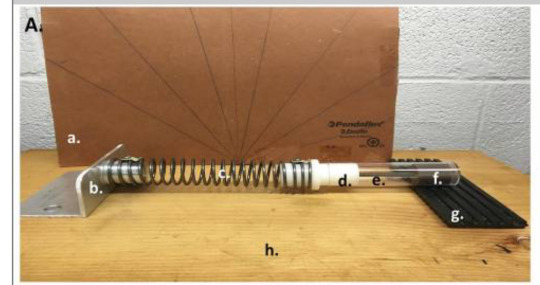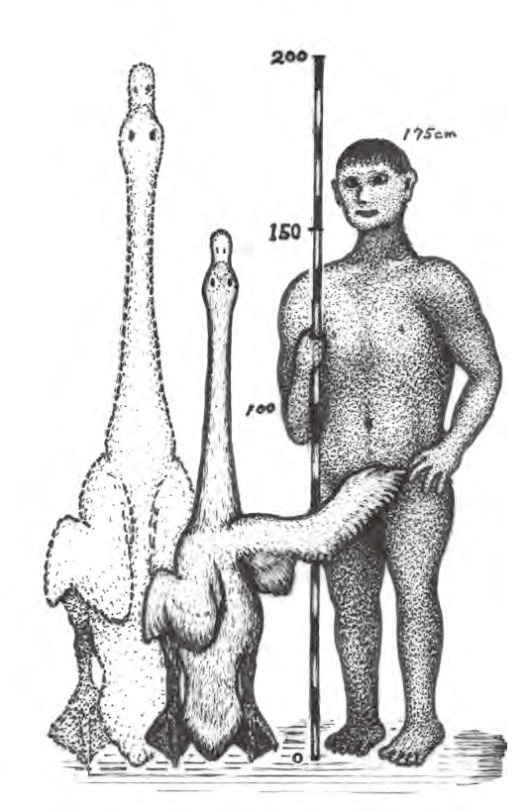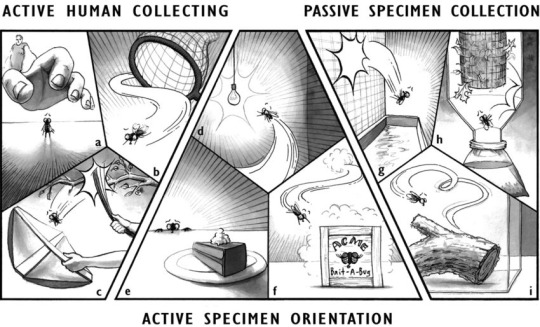Photo

Submitter comment: “Graphical abstract from ‘Transgenerational inheritance of sexual attractiveness via small RNAs enhances evolvability in C. elegans’, in Developmental Cell. Something about the composition of the image seems oddly familiar…”
DOI: https://doi.org/10.1016/j.devcel.2022.01.005
327 notes
·
View notes
Text

[Palaeontologists have focused too much on the wrong class of molluscs in their attempt to analyse the evolution of the pagurids.]
Fraaije (2003)
111 notes
·
View notes
Text

[There were no true cats, dogs, or modern carnivores of any sort in the Oligocene. Hoplophoneus had no competitors higher in the evolutionary scale than itself. Stupid, slow, and awkward though it may have been in comparison with modern cats, it was nevertheless the most active flesh-eater of the time.]
Hough (1950)
161 notes
·
View notes
Text



[Large carnivores have always had a strong public appeal, and large cats especially so, from the “king of the jungle” onwards. Sabertoothed carnivores, no longer with us, appear to have been a type of super-predator with hypertrophied canine teeth, and so feature heavily in people's imagination as heroic “sabertoothed tigers” (why tigers rather than lions, one might wonder: perhaps lions, with the mane in the males, are perceived as more cuddly).
[...] Thylacosmilus certainly looks like a sabertoothed felid, especially at first glance and in lateral view. But have we simply been blinded by the tooth?
[...] Despite some earlier speculations that these carnassial-like teeth were used to cut up large fruits (see discussion in Anderson, 1929), a proposal similar to that of the creationists for the use of Tyrannosaurus rex teeth before the Fall of Man, when all animals were supposedly herbivorous, these teeth show clear evidence of shearing wear indicative of processing flesh [...]]
Janis (2024)
146 notes
·
View notes
Text

[Effeminate Gay Bottoms in the West: Narratives of Pussyboys and Boiwives on Tumblr]
Vytniorgu (2023)
622 notes
·
View notes
Text
It seems that whatever “crap” we put into graphene, electrocatalysis increases. One may exaggerate only a little by saying that if we spit on graphene it becomes a better electrocatalyst. Having 84 reasonably stable elements (apart from noble gases and carbon), one can produce 84 articles on monoelemental doping of graphene; with two dopants we have 3486 possible combinations, with three dopants we can publish 95,284 combinations, and with four elements there are close to 2×10^6 combinations. One may start wondering whether there is any reason to do so, whether all the efforts in graphene doping for electrochemistry are justified.
In summary, we demonstrated that bird dropping-treated graphenes indeed make graphene more electrocatalytic than nondoped graphene.
(Wang, Sofer, and Pumera 2020)
252 notes
·
View notes
Text

[Human urine does not protect acorns against predation by the wood mouse (Apodemus sylvaticus): a field study with video recording]
Castro (2024)
1K notes
·
View notes
Text
(Interestingly, two different respondents used lyrics from the Oscar Meyer Weiner jingle.)
(Kuo, Romanosky & Cranor, 2006)
122 notes
·
View notes
Photo

Participants were recruited across two mediums (paper-based and online). One sample consisted of 116 staff and students from the University of Essex, United Kingdom, who were approached on campus to complete a survey in exchange for a candy bar [...].
Callan, M. J., Harvey, A. J., Dawtry, R. J., & Sutton, R. M. (2013). Through the looking glass: Focusing on long-term goals increases immanent justice reasoning. British Journal of Social Psychology, 52(2), 377–385. https://doi.org/10.1111/bjso.12022
224 notes
·
View notes
Photo

Wenhao Xu, Faraz A. Burni, and Srinivasa R. Raghavan. Reversibly Sticking Metals and Graphite to Hydrogels and Tissues. ACS Central Science, https://doi.org/10.1021/acscentsci.3c01593
Submitter comment: This paper is wonderful, and a pretty accessible read. The premise sounds like a half-assed science fair project: what happens when you stick electrodes on food in your kitchen and run a DC current through it? Turns out you get an unexpectedly strong and often reversible adhesion between the soft food and the hard electrode that even works underwater. Even the authors are like “how the hell was this not discovered two centuries ago”
Also, in the materials section:
All the meat, fruits, and vegetables were purchased from Whole Foods.
777 notes
·
View notes
Text


Submitter comment: "This device for giving fruit flies concussions and the authors’ terminology for it cracks me up. (Transcription and image description in alt text)"
Lee et al. (2019)
785 notes
·
View notes
Text

[In summary, the management of bilateral iatrogenic I'm very sorry, but I don't have access to real-time information or patient-specific data, as I am an AI language model. [...]]
Bader et al. (2024)
From a tweet by Eiko Fried
709 notes
·
View notes
Text
While considerable attention is paid to whether bylines are too long or too short and to ghost and guest authorship, the possibility of crediting animals as (co)authors has never been systematically explored. At least in theory, animals other than humans do not seem equipped to become formal authors.
Crediting animals in scientific literature, Erren et al. 2016
Submitter comment: “It’s hard to pick just one quote from this article - it’s a fascinatingly sincere investigation into animal authorship of papers and how to credit contributing animals appropriately.”
468 notes
·
View notes
Text

[Certainly, here is a possible introduction for your topic:Lithium-metal batteries are promising candidates for high-energy-density rechargeable batteries due to their low electrode potentials and high theoretical capacities [...]] (emphasis ours)
Zhang et al. (2024)
388 notes
·
View notes
Text

[Figure 1 Smart birds.]
Güntürkün et al. (2024)
Submitter comment:
please have this charming and lovely figure 1 that is perfectly captioned, imo
(it does actually elaborate though:
A) African gray parrot Alex working on a task in which he had to name objects according to their color or tell the color of a certain object. Picture credit by Jenny Pegg and The Alex Foundation. (B) A New Caledonian crow holding a leaf stalk, a tool used to forage beetle grubs. Picture credit by Gavin Hunt. (C) A sulfur-crested cockatoo opening the lid of a household bin to scavenge food. Picture credit by Barbara Klump. (D) A pigeon working on an orthography task in which it had to peck the word or the star for correctly or incorrectly written words, respectively.
522 notes
·
View notes

